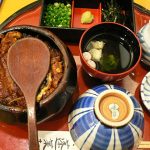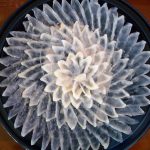uly 23 is Unagi no Hi, or Unagi Day! Unagi, or barbecued freshwater eel, is widely available across Japan and ranks as one of my favorite Japanese foods, alongside sushi. The key to a fantastic unagi meal is choosing a place that selects its eel well and grills it perfectly. Known as Kabayaki, unagi is deboned, filleted, and basted with soy sauce, sugar, and sake before being steamed and/or barbecued over an open flame. There are two main styles of preparing unagi: Tokyo and Osaka.
The primary difference between them is that Tokyo’s method includes steaming. In Tokyo, the eel is first barbecued, then steamed, brushed with sauce, and finally broiled again. This steaming process helps remove excess fat and imparts the eel a soft, delicate texture. In contrast, the Osaka style involves grilling the eel directly over an open flame, basting it with sauce, and repeating the process until it reaches a crispy, charred perfection. This method produces a richer, more robust flavor, which some describe as more “masculine.” While both styles are likely available in Nagoya, I have only encountered the Osaka style and generally consider
I prefer the Nagayaki style of eating unagi, where the whole eel is grilled and served as a steak with rice, Japanese pickles, and unagi liver soup. However, Nagoya locals generally favor Hitsumabushi, which we’ll focus on today.
Hitsumabushi is similar to an unagi donburi, or eel rice bowl, but with a unique eating method. Unlike a standard donburi, which features slices of eel on a bed of rice, Hitsumabushi involves several steps:
- Begin by scooping out a quarter of the eel and rice into the empty bowl and eating it as is. Add a bit of sansho (crushed Japanese green peppercorn) if desired.
- After finishing this portion, take another helping and mix in half of the provided seasonings, which typically include green onions, dried seaweed, wasabi, and grated leeks.
- Transfer the remaining eel and rice to the bowl for your third serving, add the rest of the seasonings, and pour the dashi (fish stock soup) from the small pitcher over the top. Mix it in to create an ‘ochazuke’ style dish.
- If there’s any eel and rice left, you can enjoy it however you prefer. Technically, this is three steps with a cleanup fourth, but some people divide it into four distinct steps for a more organized experience. Adjust your portions as needed if you want to repeat any steps!
Hitsumabushi in Nagoya
Here are some notable places around Nagoya where you can enjoy hitsumabushi:
Bincho
Hitsumabushi Bincho uses high-quality bincho charcoal for grilling, which imparts a distinctive taste and helps retain the eel’s juiciness. There are two branches near Nagoya Station: one in the Dai Nagoya Building and another in the Esca underground shopping complex. The Dai Nagoya Building location offers a slightly more upscale experience.
Website: hitsumabushi.co.jp
Hōraiken
Known as the most famous place for hitsumabushi in Nagoya, Hōraiken has a traditional mansion-style main branch a couple of blocks south of the Atsuta-jingū entrance. Be prepared to wait on peak days as reservations are not accepted.
Website: houraiken.com
Hitsumabushi Inou
Located in the Esca shopping center next to Nagoya Station, Hitsumabushi Inou offers a sophisticated, modern atmosphere and has served hitsumabushi since 1991. The restaurant accommodates international customers with English and Mandarin menus and provides efficient service.
Website: inou-hitsumabushi.com
Maruya Honten
Situated on the 9th floor of the Meitetsu Building, Maruya Honten is known for selecting the fattiest eels and a complex blend of soy sauces used in grilling. This results in a rich flavor profile for their hitsumabushi.
Website: maruya-honten.com
Shirakawa
Offering hitsumabushi at a more affordable price, Shirakawa provides smaller portions, with a mini hitsumabushi option available. Despite the lower price, the quality is high, and the restaurant is particularly praised for its dashi-tea used in the ochazuke course.
Website: hitsumabushi.jp
Unafuji
For a more casual and cozy atmosphere, visit Unafuji near Tsurumai Park. Despite its informal setting, the quality of hitsumabushi is high, thanks to founder Mizuno-san’s extensive experience in eel production and top-tier training.
Website: sumiyaki-unafuji.com
hirotomo from Nagoya, CC BY-SA 2.0, via Wikimedia Commons




